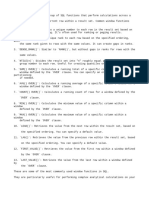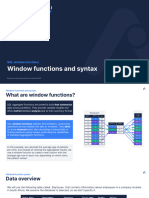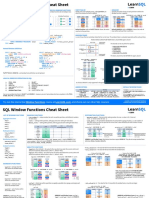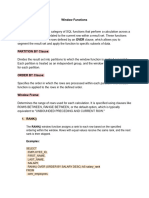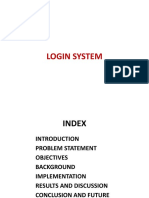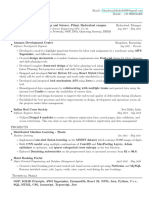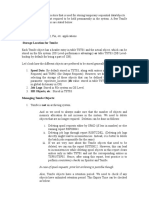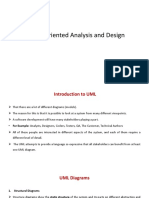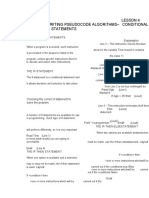0% found this document useful (0 votes)
38 views9 pagesMySQL DAY 6
The document provides an overview of window functions in MySQL, detailing their purpose in performing calculations across a set of rows. It explains key components such as the OVER clause, PARTITION BY, and various types of window functions including ranking, aggregate, and offset functions. Additionally, it outlines assignments and comparisons related to the use of these functions in practical scenarios.
Uploaded by
harshrastogi2020Copyright
© © All Rights Reserved
We take content rights seriously. If you suspect this is your content, claim it here.
Available Formats
Download as PPTX, PDF, TXT or read online on Scribd
0% found this document useful (0 votes)
38 views9 pagesMySQL DAY 6
The document provides an overview of window functions in MySQL, detailing their purpose in performing calculations across a set of rows. It explains key components such as the OVER clause, PARTITION BY, and various types of window functions including ranking, aggregate, and offset functions. Additionally, it outlines assignments and comparisons related to the use of these functions in practical scenarios.
Uploaded by
harshrastogi2020Copyright
© © All Rights Reserved
We take content rights seriously. If you suspect this is your content, claim it here.
Available Formats
Download as PPTX, PDF, TXT or read online on Scribd
/ 9










